Essay: Photography and its Mediums – Allan F. Parker
This essay is reproduced by kind permission of The Multimedia Centre, Academy of Arts, University of Novi Sad, Serbia. It is to be published by the Academy as part of a collection of essays entitled Photography as a Method of Visual Research in November 2018.
ANTIQUITY AND THE ENLIGHTENMENT
On January 14, 1506 Pope Julius II sent Michelangelo and the architect Sangallo to investigate a discovery unearthed during Julius’ ambitious project to re-establish the ancient grandeur of Rome. Michelangelo, then 30 years old, had been commissioned to sculpt Julius II’s tomb which was to stand in a central position in St Peters. The two friends left Sangallo’s house with Sangallo’s 11 year old son and when they arrived at the site, a vineyard belonging to Felice De Fredis on the Oppian Hill in Rome, Sangallo at once recognised the partially unearthed group of marble figures as a lost masterpiece; it was without doubt the sculpture described by Roman historian Pliny the Elder (AD23-79) as ‘the greatest work of art in the world’.
The marble sculpture depicts the death of Laocoon and his two sons, in the process of being strangled by sea serpents sent by Apollo. Laocoon was a Trojan, a priest at the Temple of Poseidon and this was his punishment for attempting to expose the real purpose of the Trojan horse which he struck with a sword as it stood, newly arrived, inside the gates of Troy. The story is in Virgil’s Aeneid, and it was found, buried amongst the ruins, where it had lain unremarked and undiscovered for over a thousand years. It is not clear whether the episode in the Aeneid was inspired by an oral history or whether Virgil’s poetic account was based on the pre-existing sculpture, a variety of possible dates having been suggested for its creation. The inspiration for the sculpture and the uncertain relationship with the plastic and literary arts its origin embodies (sculpture and poetry), represents the foundation of a debate around the capabilities and limitations of artistic mediums which has continued to the present day.
In 1776 Gotthold Ephraim Lessing wrote Laocoon: An Essay on the Limits of Painting and Poetry(2) in which he argues against Horace’s famous claim “ut pictura poesis” (as is painting, so is poetry), suggesting that an artwork, in order to be successful, needs to adhere to the specific stylistic properties of its own medium. He maintained that different subjects could not be easily translated from one medium to another and that artistic media couldn’t be talked about in the same way, arguing, for example, that poetry unfolded over time (duration) and that painting and sculpture did not – although they did offer the possibility of a simultaneous presentation which could be contemplated over time.
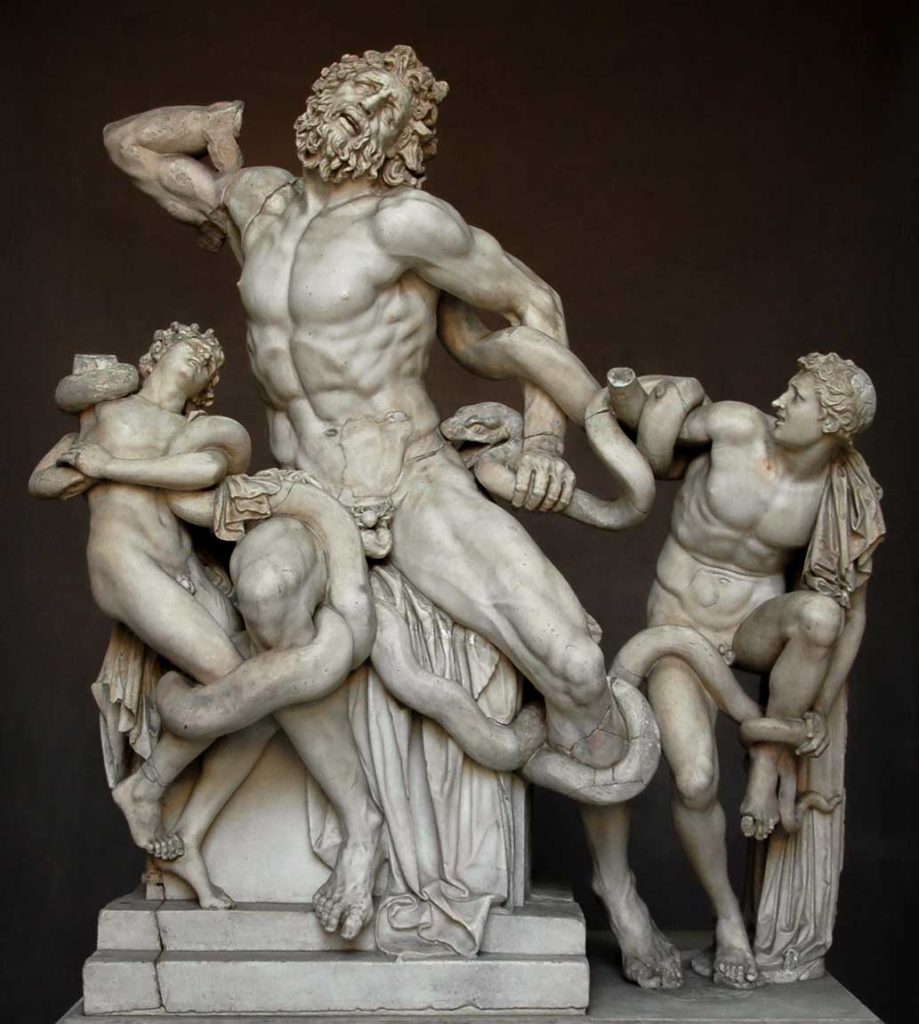
PHOTOGRAPHY AND MODERNISM
Arguments about poetry and sculpture notwithstanding, the debates on photography in the 19th and early 20th century follow the essentials of this argument and centre on whether photography could be considered as art, later setting the scene for a modernist interpretation of the place of photography in the arts. Art photographers such as Alfred Stieglitz, Edward Weston, and Paul Strand argued that in order for photography to be taken seriously (as an art form), it must operate only according to its own capabilities: it must not aspire to imitate the aesthetics or materials of painting. The art of photography thus became defined in strictly medium-specific terms. This position was perhaps easier to establish in the mid 20th Century when there was still plenty of clear water between different image making technologies. Beaumont Newhall’s 1937 exhibition “Photography 1839-1937,” at the Museum of Modern Art in New York and his accompanying catalogue, Photography: A Short Critical History,(3) is a modernist account of photography’s history, framing its successes and failures against an assumption that the aesthetics of photography are controlled by a pure use of the medium, which at the time meant a (stills) film camera and photographic prints depicting buildings, street scenes and portraits using strong compositions. The exhibition that Newhall mounted secured photography’s place within the arts and distinguished it from other arts such as painting. Its accompanying catalogue described the first 100 years of photographic history giving equal credit to its technical virtues, as well as its value as an art form. In 1940, Newhall became the first curator of MOMA’s photography department. Newhall’s career continued and he became curator of the George Eastman Museum (then George Eastman House) from 1948 to 1958, and its director from 1958 to 1971. While at the Eastman Museum, Newhall was responsible for amassing one of the greatest photographic collections in the world. This did not however, include the hinterland of photographic practice such as extended narratives, montage, any mix of photography with other media or photography that was staged in any significant way. He dismissed any attempts at mixed media, such as early hand-coloured prints and Man Ray’s darkroom experiments, as inherently non-photographic.
The insistence on medium-specificity came to a head in the era of modernism, and has become associated with the art critic Clement Greenberg in New York. Greenberg concentrates exclusively on the plastic arts(4) (painting). He defends and celebrates abstract painting as achieving the perfect expression of medium-specificity and purity, purity being the ideal state of medium-specificity – the work as uncontaminated by the influence of other media. But there were arguments against this position which have grown louder over the years. Post-modernism was, in part, a reaction against the dominance of critics like these creating an exclusive narrative from which others and their contributions were unnecessarily excluded. Different curators play a crucial role in presenting different points of view, emphasising the plurality of artistic and photographic practice. Competitions are also influential in terms of the kind of images people make and what is seen to be valourised and supported by the establishment.
THE REVOLT AGAINST PURITY
W.J.T. Mitchell’s 1994 essay, Ut Pictura Theoria : Abstract Painting and Language(5), argues against Greenberg’s conception of purity. According to Mitchell, representational and abstract painting both have an involvement and dependence on language, the former always involves narrative, and the latter has historically been dependent on theory. Greenberg’s idea that abstract art is free from any relationship with language is rejected. In Mitchell’s view, in which medium-specificity of this kind is impossible; words are always used to explain images – for Mitchell, words are part of the overall presentation. One might argue that this position reveals many critics inclination to give themselves a central role within the creative process. Critics notwithstanding, it is perhaps part of the legacy of the conceptual art of the 60’s that ideas and texts have continued to play significant roles in various forms of art, or have been its subject, and this is of course no less true of photography, which has been enhanced by captions or legends of one kind or another from its origins. These might be descriptive, poetic, rhetorical or polemic, either intentionally or unintentionally. Thus, there is a long standing relationship between text and image in photography which mitigates against the supposed purity of the photographic image and opens new fronts regarding the origin of images, who they are made by and for what purpose, as integral aspects of their agency. Exhibitions in the big museums and galleries with names like ‘The First 100 Years of Photography” and their accompanying publications are, and have been, historically very influential. It is perhaps helpful to think of them in terms of what things are seen – in the sense of being made available – and in what context. These exhibitions colour what people think in terms of received ideas and they influence what is published on the subject, what is taught in Schools and Universities and ultimately how we recognise the field in which we are operating.
The next generation found Greenberg’s influence over the art world and his pronouncements elitist and restrictive of artistic freedom. Although he did not expect figurative painting to be removed from museums and Newhall’s dismissive views on narrative, montage, and staged photography did not cause these disciplines to disappear, nevertheless these powerful voices did have an effect, and from some perspectives it was a damaging one. Colour cinema’s early history was almost completely ignored because of the formalist rejection of painting on negatives. As a result, many prints fell into irreparable decay. Many early interesting and important mixed media artists and photographers were ignored by Museums and collections because of their “non-photographic” subject matter or technique, Clearly, there were many photographic works which were not assigned the value in photographic markets which they might otherwise have had. Reflecting on early 20th Century photographic history we have a sense of lines being drawn, of the map being ‘carved up’ of fiefdoms being fought over and arguments being won or lost.
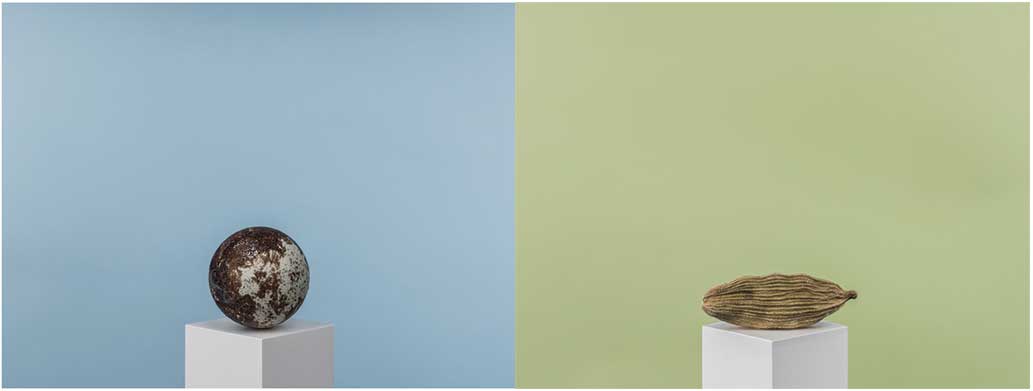 Grace Flynn (2016)
Grace Flynn (2016)
Lecturers in photographic practice frequently encounter the fallout from these debates today. This image is part of a series made by a student as a part of her degree show – it was subsequently used in a prospectus to promote a photography course. It prompted one academic to remark that it didn’t look like photography but looked more like sculpture. Despite the fact that it clearly fits into the category of still life, the subtext of this comment seems to be: “It’s not what I would expect a photograph to be in the context of a photography course.” So what ‘should be in a photograph and what does this particular work consist of – what is its project? The conception of this series of images began in a sculptural way with making and spraying a series of different sized plinths to accommodate a number of small natural objects of different sizes before finding and lighting the background and photographing them. The artwork residing in the photograph and not in any remaining sculptural element. The image is made with a particular purpose in mind: by photographing small objects – objects that we normally see ‘en masse’ like peas and seeds – in this particular setting, we see these objects in an unfamiliar light. A tromp l’oeil effect is created by changing the sizes of the plinth so the subjects all occupy a similar area in the image. We are directed to look at these items on their own as individual elements, and to see their uniqueness. These insignificant objects are lionised on their plinths, they hint at the uniqueness of the individual also showing us something about the choices that might be made in photography – about how we choose to see things and how we might represent ideas. This assumes a question about the medium of photography – is photography a specific medium on its own – or does include the ideas that go into it?
If someone saw this as an inappropriate use of photography – what is the right one? – what should be in a photograph? – or what does the medium of photography consist of – is it a constructed idea or just what happens to be in front of the camera?
The French Philosopher and theorist Jacques Ranciere identified two possible approaches to image making: one in which the photographer photographs what is in front of him or her and one in which an image is created for the camera, something which starts from an idea. The exhibition ‘Material Light’ was curated by curators and artists from London and Serbia was presented at the Cultural Centre of Belgade in 2015, and, in a slight different version, at the Kochi Biennial in India in 2017. In the exhibition there is a wide variety of work – and while all the work is linked to what we might call ‘the photographic’ many of the works in this exhibition do not share a common method of construction. The exhibition was conceived as an examination of the material and included work produced in reaction to, or in concert with digital technologies – but as the curation has developed it has become more focussed on the medium of photography and what that might mean in the light of the new technological developments with which we are all involved. Developments which have made it obvious, as Prof. Ranciere points out, that in the notion of Photography or the Photographic, “the idea of the medium clearly exceeds that of the apparatus”(6) in other words what we think of as ‘photographic’ exceeds any narrow idea of photography as defined by the use of any particular apparatus, such as a camera and the recording of the image on paper or glass. In effect what we can identify as “photographic” can manifest in almost any number of ways, as prints or projections, as digital images, as reflections, as imprints created by light and radiation, as data from satellites and telescopes, as scans using various wavelengths of light, or even sound – so many ways in fact that materially they may have very little in common. The idea of ‘the photographic’ has been around for much longer than the camera.
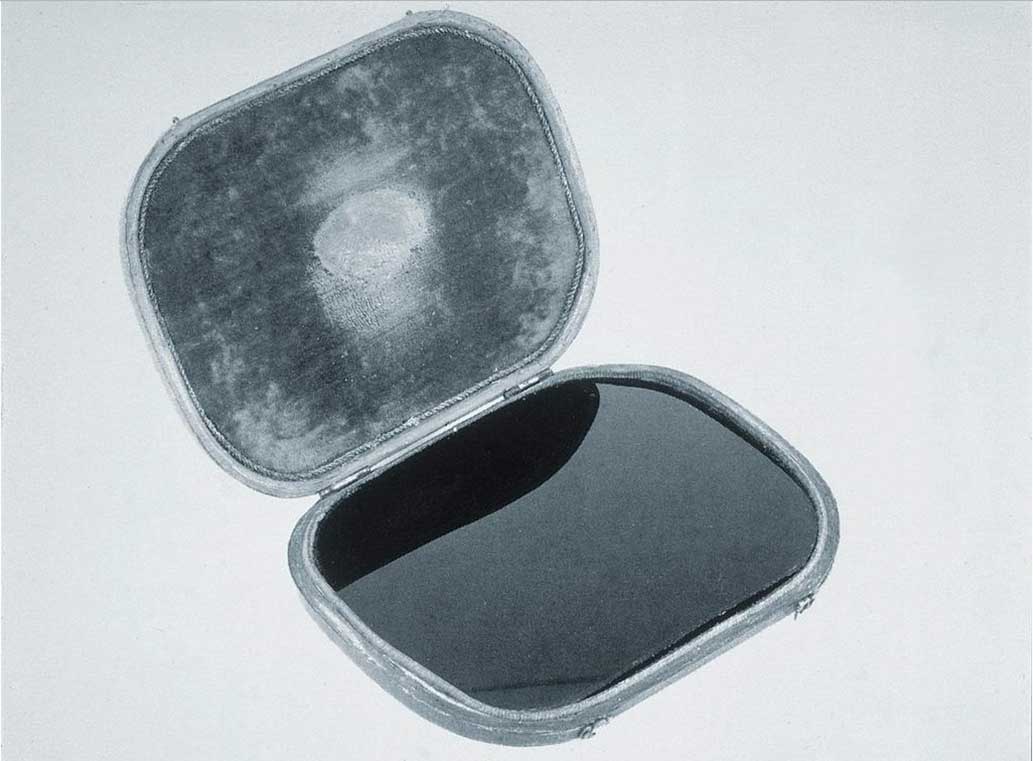
This is a Claude Glass from about 1800. It is named after the landscape painter Claude Lorraine (1623 -1682), and it was used to assist (mainly English) aristocrats to see their landscapes as images by reflecting them in a tinted mirror. Landowners and walkers could use it to create compositions in an approximation of the paintings Claude Lorraine had painted nearly 200 years earlier, but of course they couldn’t preserve or fix the image. This may seem like a 19th century problem – but the fugitive nature of images continues to be a issue today, but for slightly different reasons.

Stolen – Nihaal Faisal (2016)
Stolen is a work by Indian artist Nihaal Faisal who featured in the Material Light exhibition at the Kochi Biennale – a 16mm film from which the image has been almost entirely stripped from its celluloid base. The film, liberated from the Karnataka Documentary Film Archive, is a documentary about Kannada freedom fighter and educator H. Narasimhiah, who now appears as a ghost in the document of his own history. The resulting work is emblematic of the vast archives of material history which have failed to make the transition to digital formats and are consequently very likely lost to history. This is a long way from being a photographic print – but it’s conceptual element wrestles with some of the fundamental concerns of photography, such as digitisation and the preservation of the past.
In his series A History of the world in 100 Objects, Neil MacGregor reminds us that it is often the object (a category in which we can include the photographic print) and the story we tell about it, that best tells forgotten or marginalised histories – an idea also central to Walter Benjamin’s Arcades Project. The official version of history is often primarily a text, and this is usually the one that goes into the archive, national library and school syllabus.
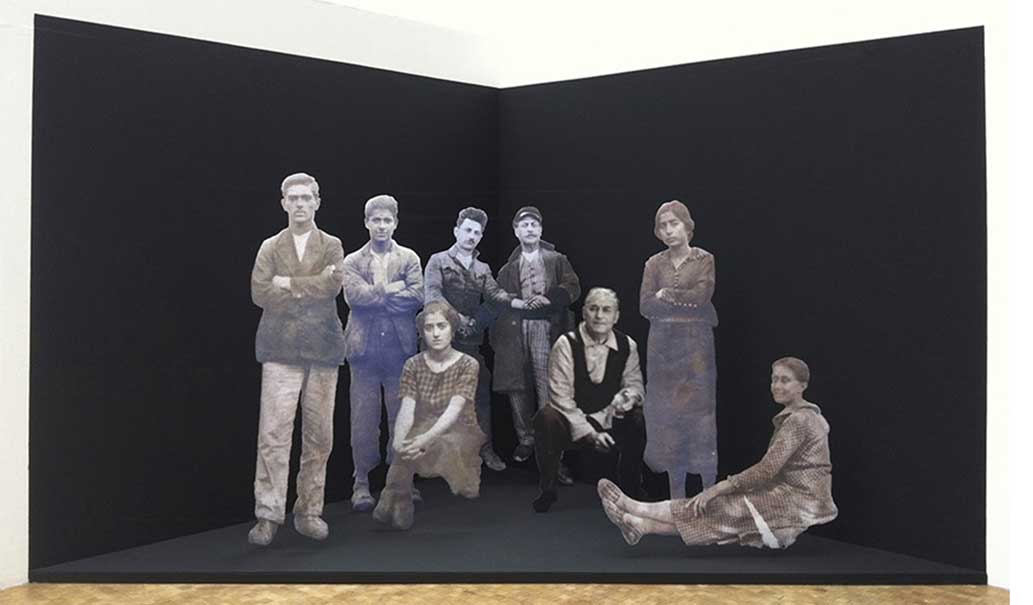
Armenoui Saraidari Kasparian – The Survivors (2014)
This work by Armenoui Kasparian called ‘The Survivors’, is made from snapshots enlarged to life size. The images were taken after the Armenian Genocide in Anatolia in 1915. She has researched her own families story and created enlarged images of the snapshots she has discovered to draw attention to a story that is still unfolding. This work capitalises on the aura of the original snapshot. Museums such as Tate Britain accommodate contemporary photographers like Wolfgang Tilmans who situate themselves on the borderline of photography and art and have been instrumental in finding new ways of using the photographic print as a part of a whole, but there is nevertheless a sense of the institution of photography in this work as it is popularly understood in museums of contemporary art, which continue to struggle to accommodate photography in art collections in a coherent way.
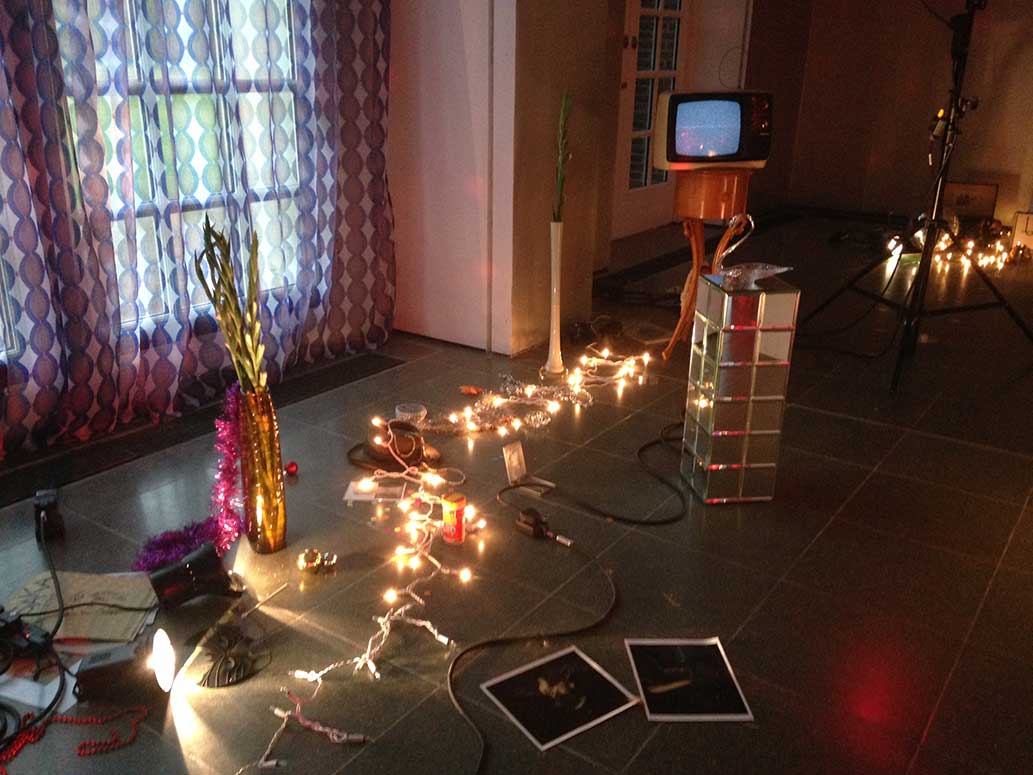
Marc Camile Chaimowitcz – Enough Tiranny (sic), Serpentine Gallery London (2016)
Some artists are much less reverential in their dealings with the photograph – seeing it as one possible sculptural element amongst many others, or even as a part of the detritus of modern life – as in this installation “Enough Tiranny” (sic) at the Serpentine Gallery in London by Marc Chaimowitcz. Gerhard Richter has made the photograph the subject of his paintings and other works since the 1960’s and although his work clearly demonstrates a fascination for the photograph – using both his own family photographs and archival images, his concerns and interests are very different from those of many photographers. Because he is widely viewed as one of the great artists of our time and also a painter, he resists inclusion in the world of contemporary photography.
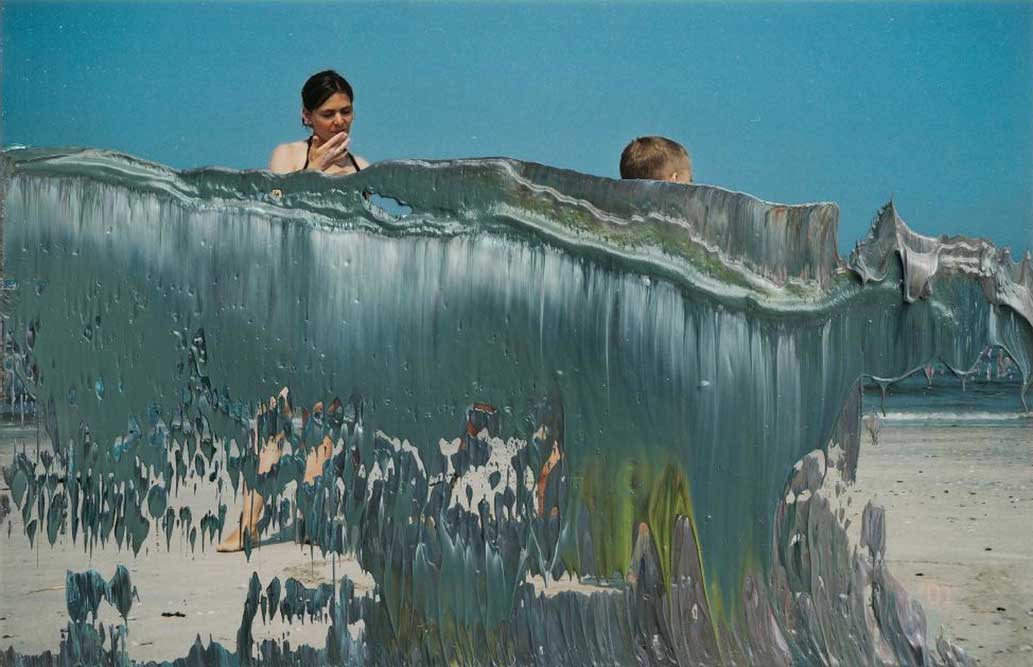
Gerhard Richter – Overpainted Photographs
Richter’s ‘Over-painted Photographs’ – at once casual and refined – come from a lifetime of work in both paint and photography. It does us no real good to try and see them either as paintings or as photographs but rather as objects that engage with materials in addressing ideas outside of that of themselves.
THE DIGITAL TURN
Distrust of grand narratives has meant that there has recently been less appetite for pushing the purity of any particular medium too hard. Although one can apply to do a painting or sculpture course in art schools and Universities today it is acknowledged that many artworks are often made with a number of different media, which includes photographic elements in installations, together with internet art, films, projections and so on. This is largely due to the influence of digital media and its inclination towards convergence, brought about by their compatibility with each other. Although there are still many who are committed to a particular way of working, the advent of digital technologies have necessarily made the borders between medium and art form much more porous.
While many practitioners are not particularly nostalgic for camera based photography and prints created in the darkroom – there are some who continue to see these technologies as the authentic heart of the medium. However, all have been quick to notice the appropriation and direction of image making through proprietary devices such as mobile phones and tablets and their distribution by major corporations such as Google and Apple to the point of global saturation.
It has fallen to photographic theorists and artists to critique these practices – to tell us what’s going on. The use of these devices corral the public through communities of interest, much of which is defined through a particularly prescriptive type of photography – these large companies are banking on the fall-out of personal moments and memories to which people are emotionally or existentially attached. This material is effectively loaned out to multiple users (‘sharing’). The retention of users through their links and sharing sites is then used for advertising purposes. Large corporations are using a de-valued version of photography to ensnare their customers and drip feed them advertising and/or products, confirming the adage, “if its on-line and it’s free – you are the product”.
This has all been achieved through a suite of convincing promises and offers, such as free photography, ease of use and convenience, a promised emotional connectedness, and of an assumed duty to communicate and ‘make the world a better place’. The lines of communication manipulate the flows of activity giving an impression of inclusion, through which the goal of an illusory emotional closeness with products and services is created. This is the advertising medium of the moment. The controlled nature of many image-making devices, the output of which often comes with a ready made aesthetic – has made some aspects of digital technologies less attractive to image makers, fuelling the impetus for the ‘Post-Photography’ movement, which attracts artists who aim to explore the possibilities of what can be achieved in visual media, and to create images and present ideas which are not solely the product of a consumer device and which may include materials and methods not endorsed in the consumer scenario envisaged by the multi-national creators of the hardware.
Critics may also want to question the ways in which technologies are being used. When we talk about media ‘convergence’ we mean the overlapping of photography, video, sound, and the output of digital devices of all kinds such a radio telescopes and scanners. It is possible to produce images using code or sound. Elizabeth Price won the Turner prize in 2012 with a work which links a number of themes in a video piece employing photographs, texts. graphics and video assembled by the artist to create both intended and associative meanings and possibilities. Some educational establishments have been slower to embrace these possibilities. Photography courses at many established institutions have retained some of their medium specific tropes, this is perhaps partly due to photography’s strong links to its obvious vernacular or everyday uses and the popular conception of photography involving the use of a camera and being ‘in the right place at the right time’, rather than as one medium amongst others with almost limitless potential in a wide variety of fields.
References:
(1) Jonathan Jones – The Guardian: https://www.theguardian.com/culture/2005/apr/27/1
(2) Lessing, Gotthold Ephraim. Laocoön: An Essay on the Limits of Painting and Poetry (1766).
(3) Newhall, Beaumont, Photography, a Short Critical History. New York, The MOMA [1938]
(4) Clement Greenberg, Towards a Newer Laocoon. Partisan Review, volume 6 (1940)
(5) W. J. T. Mitchell, Ut Pictura Theoria: Abstract Painting and the Repression of Language, Critical Inquiry,
Vol. 15, No. 2 (Winter, 1989), pp. 348-371
(6) Rancière, Jacques. What medium can mean, Parrhesia number 11, 35-43 (2011) tr. Steven Corcoran
Krauss, Rosalind. A Voyage on the North Sea: Art in the Age of the Post-Medium Condition. London:
Thames & Hudson, 2000
MATERIAL LIGHT (exhibition) The Cultural Centre of Belgrade – Podroom Gallery (2015)
http://www.materiallight.net/material-light-belgrade/ curated by Allan Parker and Mia Cuk
Catalogue: OPIPLJIVA SVETLOST/BEOGRAD ISBN: 978-86-7996-145-7